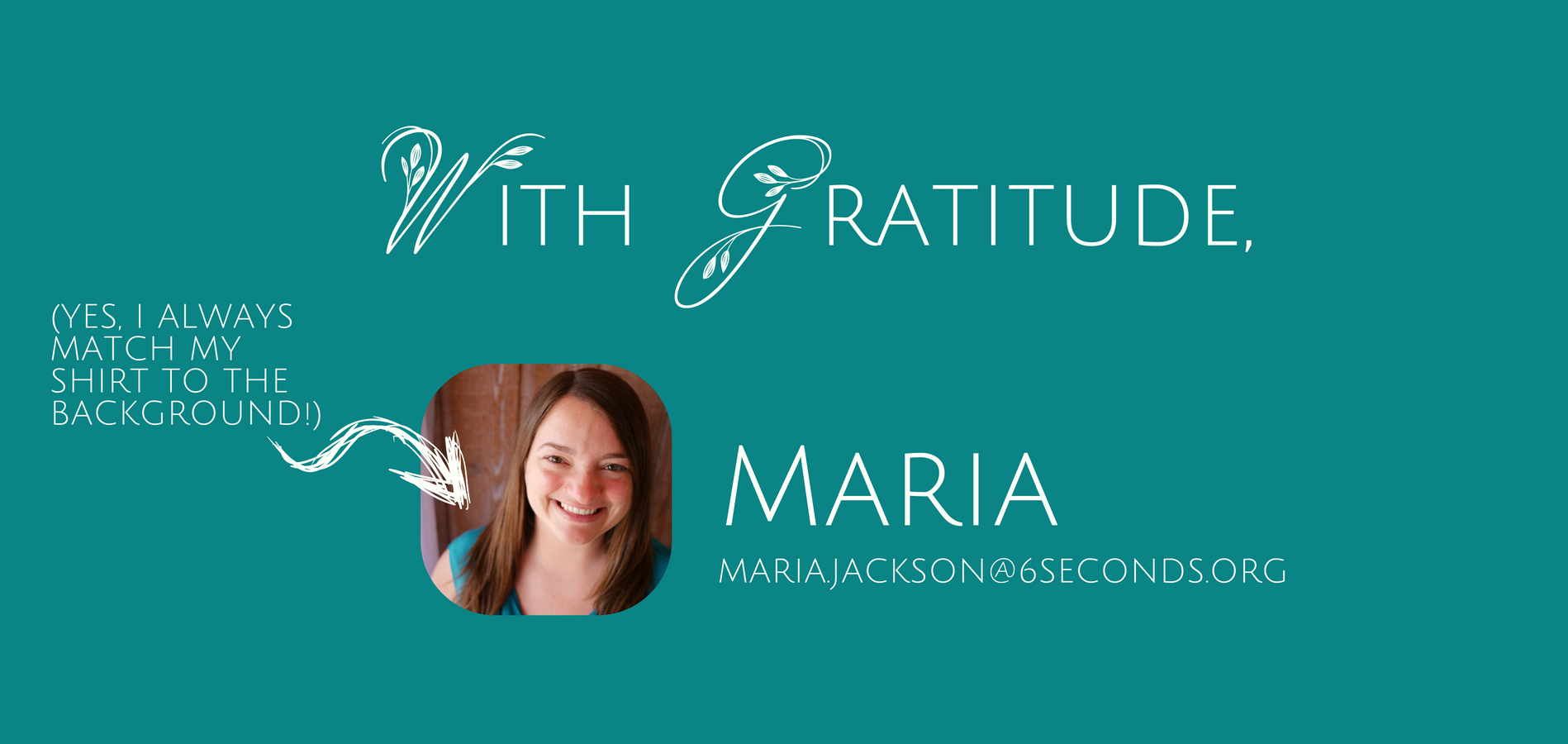
Happy August!
This week, you can find me in Missoula, Montana, reunited with my love as well as with my childhood best friend. We are having a blast floating down the river together by day and cooking feasts together by night. So this week, to make time for all this fun, I’m offering you one of my favorite past illuminates on creating affirmations. See you next week! (+ if you want to receive these little gifts of inspiration every week in your inbox, click here)
Illuminate: Craft Your Personal Affirmation in Five Steps



What emotion do you navigate most?
A couple of weeks ago, I asked our Facebook community exactly that question. The number one answer? Fear. Fear is an emotion I navigate often, too. Fear of pain. Fear of never belonging. Fear of change. Fear of never changing.
I understand fear because it likes to tell me the same story. Its story sounds like this: “Watch out!! This seems risky!” And, as the good friend I am, it is my job to respond, “what are you scared of, fear?” Then, I pull my fear close, give it a kiss on the head, and repeat this one million times:
“I am safe.”
When I am doing a physical therapy exercise that really hurts, my fear says, “be careful!! Pain means STOP!” Knowing that fear only yells louder if I ignore it, I stop and either say out loud or in my mind, “I am safe. I am safe. I am safe.” When I am alone, I also give myself a hug while I say it, which really helps me to feel safe.
“I am safe” is an affirmation I use when I encounter fear, but affirmations can be used to re-train any of your habitual story patterns. They can be said out loud or internally. The research on the results of affirmations is quite honestly mixed, but one of the variables in effectiveness is very clear. Effective affirmations are self-created, meaningful, and dig into one’s core values. For example, an affirmation card I pull out of a deck of cards won’t be as effective as one I choose from the deck based on my core values. Better yet, you can create your very own affirmation.

The most important aspect of your affirmation will be that it feels authentic and meaningful to you. If it doesn’t ring true, drop it, and try again another day. The act of simply contemplating an affirmation takes meaningful, deep work. Feel free to do this exercise as many times as you want in search of your favorite affirmation. It’s just five steps. Let’s begin!
1. Choose a word from the “basic emotion” column from the chart below. You can choose one that you navigate often or one that you want more of in your life. I am choosing fear.

2. Read the question from the “attention” column for your chosen emotion. What’s your general, most frequent answer? For example, fear asks me, “what is at risk?” and right now I might have a fear: “I could hurt my knee the next time I try to walk across the yard.” Looking more broadly, I’d write: “my physical safety is at risk”
3. Look at the answer to your #2 and create a positive “I am…” statement. What does your answer want to hear from you? My response of “my health is at risk” wants to hear “I am safe,” so this is the affirmation I choose. If joy informs you that you want to maintain a peaceful life, you might say “I am peaceful” or “I am consistently creating a peaceful life.” Whatever you choose, I want it to feel like a salve for your mind and heart.
4. Try adding a visualization or gesture to go with your affirmation. Some find that adding a mental scene (like the ocean or your favorite place) to their affirmation is helpful. Giving myself a hug when I say “I am safe” helps me to internalize the meaning. If the visualization or gesture feels distracting rather than helpful, then just go with your words.
5. Take a few deep breaths, closing your eyes if comfortable, and repeat your mantra either out loud or silently.
That’s it!
If you’ve found an affirmation that really helps you, it may help you even more to write it down. You could write it in your journal, or put it somewhere you’ll see often, like taped to your mirror or computer.
By the way, if you found the chart above to be useful, you can see the full “Feeling Wisdom Chart” here.

What two or three emotion words can you use to describe how saying your affirmation made you feel?
What did you learn about yourself from the process of creating your affirmation?
How would you like to see yourself integrating this affirmation into your routine?
If the affirmation didn’t ring true for you, how do you feel about that? What is that feeling asking of you?
ps- Heidi Day, a phenomenally charismatic trauma coach, is the inspiration for this week’s Illuminate. Check out my interview with her (and find out what affirmations she says daily) here. I promise you’ll finish it feeling refreshed & inspired 🙂

Illuminate is a weekly e-mail series that provides practical tips + galvanizing inspirations for practicing an emotionally intelligent life. In our time together, we’ll operate from the assumption that you have all the wisdom you need inside of yourself + that you have a purpose the world needs to see. We will explore the tools + techniques to illuminate your own inner wisdom and purpose. If you’d like to receive this free gift of goodness in your inbox every week, subscribe here.
What’s new in emotional intelligence?
From Enemy to Ally: How Eric Pennington Changed His Relationship with His Own Emotions – and Found His Life’s Purpose
How emotional intelligence helped Eric Pennington transform corporate life setbacks into strengths – and find purpose in both work and life.
Helping Others Achieve Overall Well-being and Healthy Connections: How Emotional Intelligence Guided Pamela Barker’s Career Path Growth
Pamela Barker’s journey began with healing bodies, but it was her discovery of emotional intelligence that unlocked her true purpose: helping others achieve overall well-being and healthy connections. From her days as a physical therapist to becoming a passionate EQ coach, Pamela’s story is one of transformation, resilience, and the power of connection. Her experience shows that real change starts from within.
Harnessing Emotional Intelligence: How Sara Canna Supports Employees and Transforms People’s Lives at the World Health Organization (WHO)
Emotional intelligence is more than just a buzzword—it’s a transformative tool that can reshape how we navigate challenges, build relationships, and thrive in demanding environments. Discover how Sara Canna brought EQ to the World Health Organization, empowering employees to manage change, stress, and personal growth.
From Corporate Consultant to Coach: Elise Jones’ Emotional Intelligence Journey-Voices from the Network
Elise Jones transformed her career by embracing emotional intelligence, shifting from a corporate consultant to a passionate EQ Coach. Through authentic connections, she found deeper fulfilment, proving that strong relationships are key to a happier, more meaningful life.
Want to Manage Your Emotions More Effectively? Find Time to Journal About Challenging Experiences
Daily journaling to reframe unpleasant events can significantly reduce depressive symptoms, lessen stress, and increase life satisfaction.
A Journey through Empathy & Optimism: Amy Jimison in Voices from the Network
When you feel stuck and can’t see a way out, how do you navigate change? Certified Coach and leadership expert Amy Jimison shares her approach.
- Identify Your Most Fulfilling Career: A Step-by-Step Guide for Women - March 21, 2022
- POP-UP Festival Partnership with AEON Corporation - March 9, 2022
- 3 Interview Tips for Women from an Executive Emotional Intelligence Coach - February 9, 2022







Hi, Maria. I love your illuminations. I don’t see a ‘share’ click. Is it alright if I pass on short quotes or ideas from here, now and then on our social media business page?
We are educators.
Hi Beryl – I am checking w our developer about adding a better “share” function – thank yu for the reminder and please do feel free to share!
This article is so helpful, maria. I am a very tactile & visual person, so exercises like these are so helpful to me!
Thank you! Have a great day!